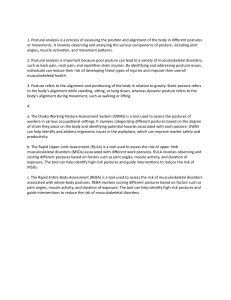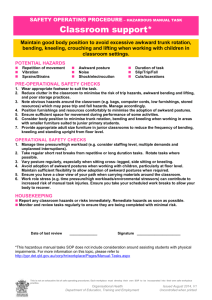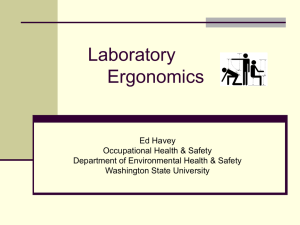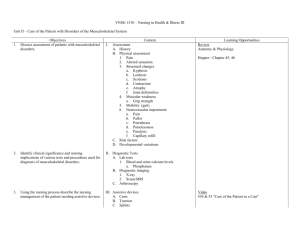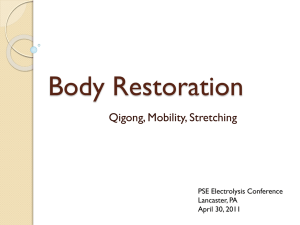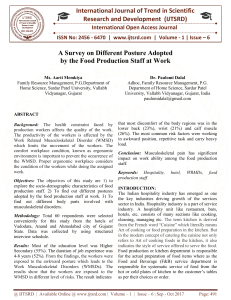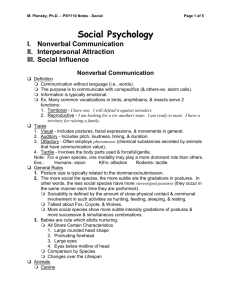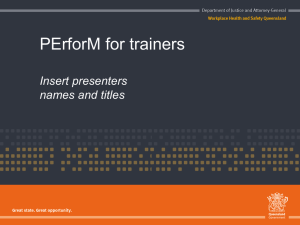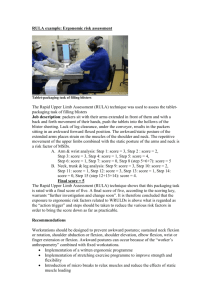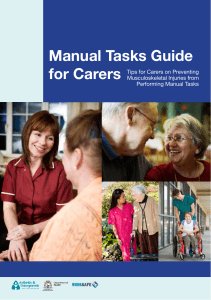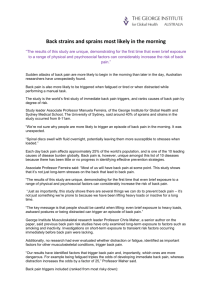ERGONOMICS FOR WELDERS
advertisement
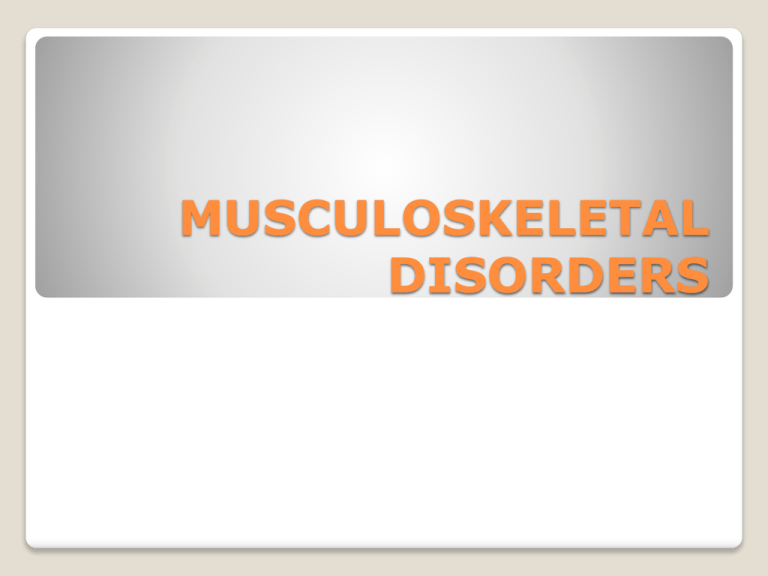
MUSCULOSKELETAL DISORDERS Work-related musculoskeletal disorders They are cumulative (occur over time and not a result of a single incident): •Often occur when the physical demands of work cause wear and tear •Involve soft tissues such as muscles, tendons, ligaments, joints, nerves, blood vessels Work-related musculoskeletal disorders They are not acute injuries such as: •Broken bones •Cuts •Slips •Falls •Trips •Motor vehicle accidents •Being struck by or caught with objects Hazards Work operations are necessary in many industries such as welding, construction, manufacturing, maintenance, etc. Welding has several hazardous conditions for women and men in these jobs. WMSD Hazards Worked-related musculoskeletal disorders (WMSD) hazards such as: awkward body postures, lifting heavy equipment or materials, static postures for prolonged periods, awkward postures of the wrist, etc. Common disorders Back injuries Shoulder pain/loss of range of motion Tendinitis/Bursitis Reduced muscle strength White finger Carpal tunnel syndrome Knee joint diseases WA State-funded compensable claims 1994-2004 Welders, Cutters, Solderers By Nature of Injury Other 13% Sprains account for more than 1/3 of the compensable claims among welders in the State of Washington. Neural 5% Sprains 32% Ill-Def Symptoms 9% Hearing loss 11% Some of those could be caused by hazardous WMSD exposures. Fracture/ Dislocation 14% Contussion/ Cut/ Scratches 16% WMDS hazards most common in work OFTEN, MORE THAN 1 RISK FACTOR IS PRESENT Rigorous manual precision requirements ◦ High degree of uniformity Awkward and static postures ◦ Difficult work position Heavy lifting, difficult material handling ◦ Heavy objects, heavy welding equipment Repetition ◦ High work intensity Hazard Elements Duration (how long?) Frequency (how often?) Intensity (how hard?) Common postures adopted in welding Working in front Working at ground level, precision work Working at ground level Working at ground level, confined space Working above the shoulders Working above shoulders, confined space ‡From: Torner et al, 1991 Awkward postures in work Severe torso flexion Torso twisting Kneeling, squatting Bent wrists Neck flexion/extension Shoulder flexion/abduction (separation) POSTUR DUDUK MANUAL HANDLING HAZARD ERGONOMI & BIOLOGI Hazard human error MUSCULOSKELETAL DISSORDERS Repetition of work High Risk Repetition Rates by Different Body Parts Body Part Minute Shoulder Upper Arm/Elbow Forearm/Wrist Finger Repetitions Per More than 2½ More than 10 More than 10 More than 200 From Kilbom Å [1994]. Repetitive work of the upper extremity; Part II: The scientific basis for the guide. Int J Ind Erg 14:59–86.
